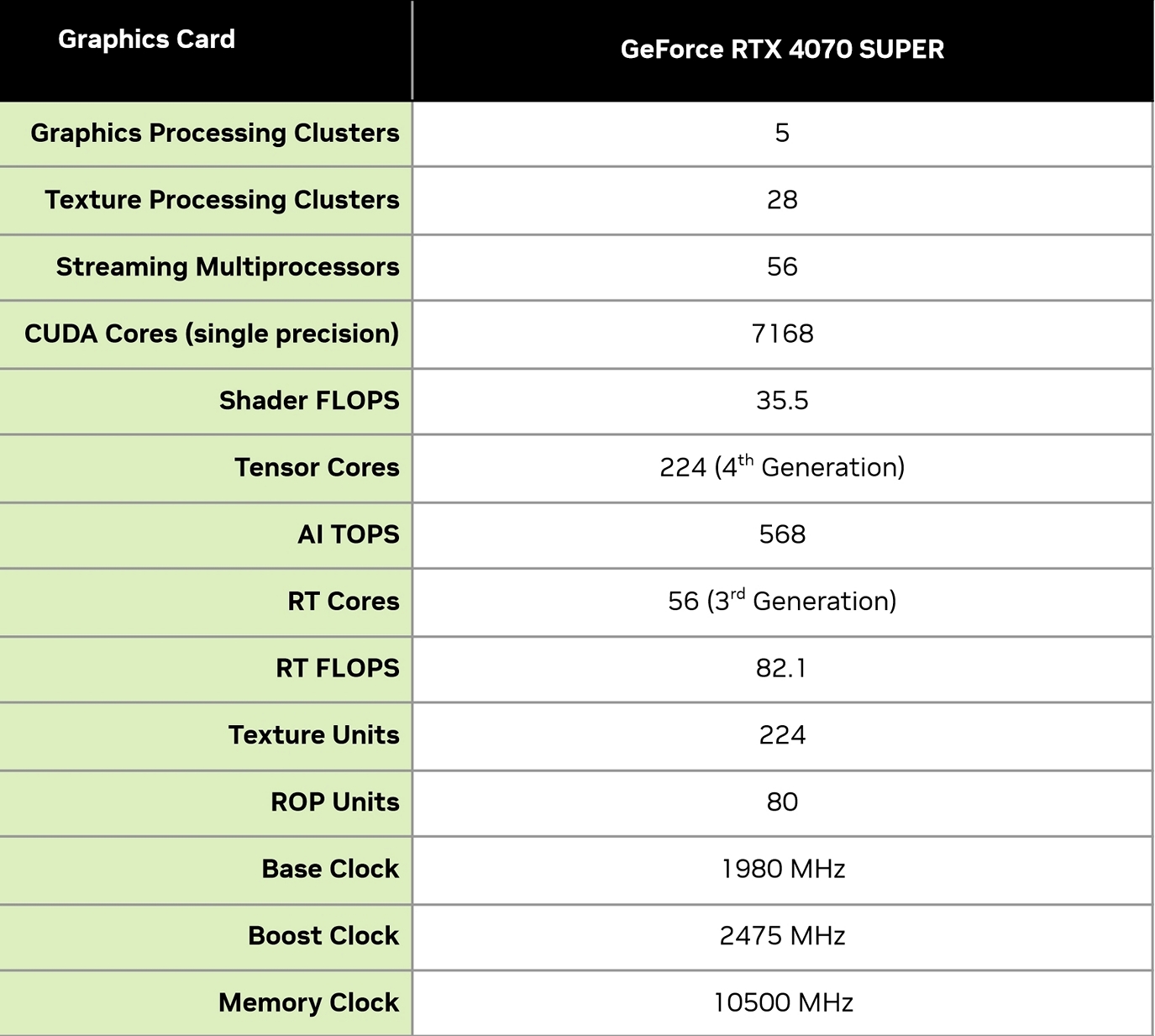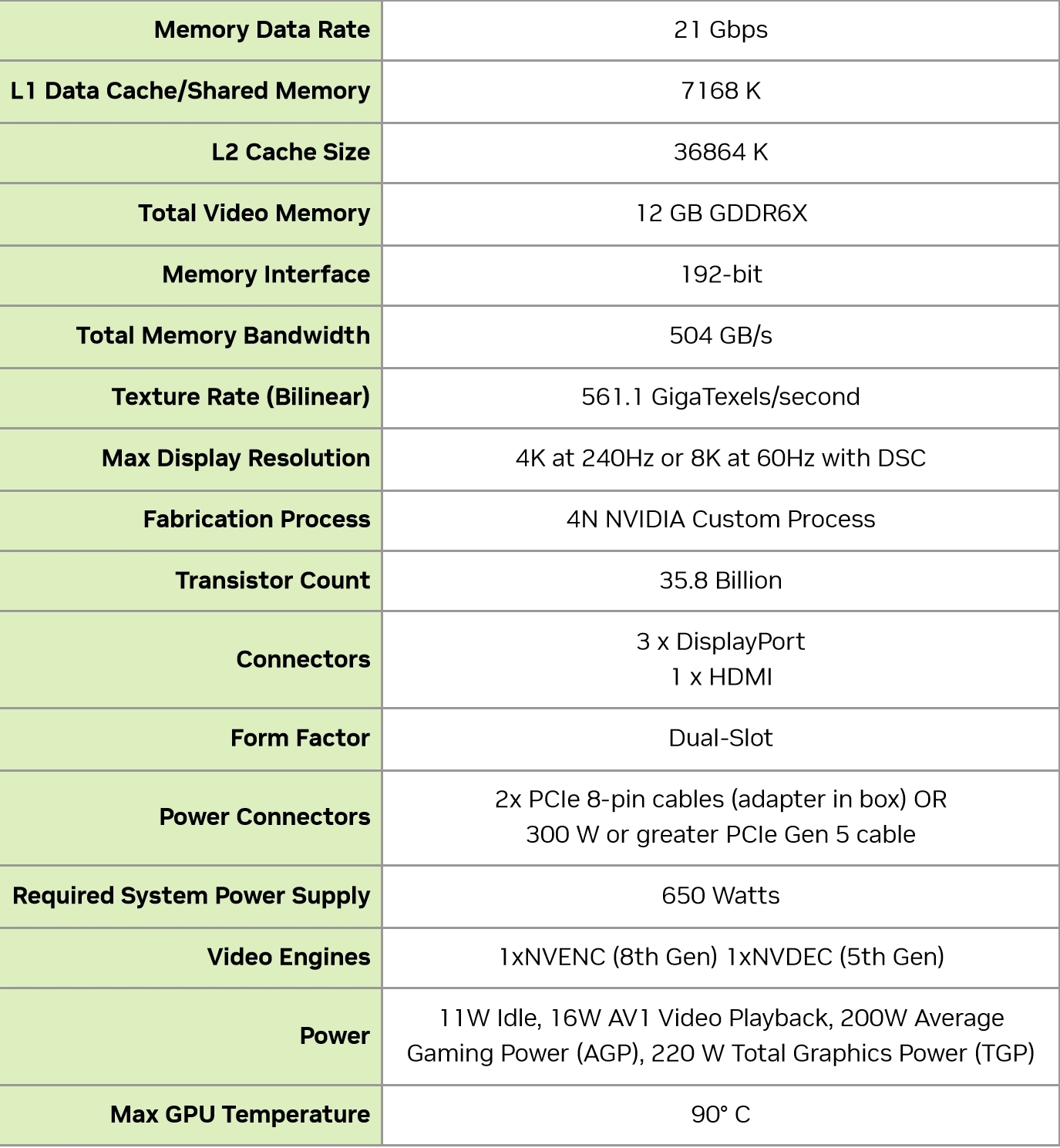Nvidia RTX 4070 Super FE Review
lerIntroduction and Technical Specifications
Introduction
Should you be like us and have followed Nvidia cards since they first introduced the Riva TNT to the world, then you’ll be aware that they’ve had a host of product names over the years. Generally speaking they have fallen into two categories. The vanilla card comes first and then, once they’ve beavered away revising it, the world sees their Titanium (Ti) cards unleashed.
When Nvidia first brought hardware ray tracing to the market in the form of their 2000 series RTX cards, this naming convention saw a big change. Instead of mainly Ti cards – although some existed, most famously the RTX 2080 Ti – the primary revised cards were named the Super. These pumped out huge numbers and were deserving of such a lofty title. The 3000 series which replaced them returned Nvidia to the more common vanilla and Ti naming scheme we were all used to. It appeared that this was the case with the 4000 series too, except we’ve also got Super cards. Here in the form of the RTX 4070 Super.
What’s New?
If you’ve avoided the news about the 4000 series technologies, the precis is this. Double performance Streaming Multiprocessors when compared to the 3000 series. 4th Gen Tensor Cores bring DLSS 3 for even higher frame rates at better image quality. 3rd Generation RT Cores significantly increase the performance of ray-tracing, perfect given how many titles are adopting it. Lastly if you stream or just encode a lot, the 8th generation of the Nvidia AV1 encoder (NVENC) is 40% better than H.264 for high quality, fast, video.
Of course the primary thing to note is how the RTX 4070 Super fairs against the regular Nvidia RTX 4070 and the RTX 4070 Ti. Somehow Nvidia have managed to find a space between the two cards to fit the Super into. Here are the main changes, although those of you already au fait with the current cards can check out the full specification table below. As you can see, the Super fits so neatly between the two, although is closer to the RTX 4070 Ti than the vanilla card. Perhaps this is best looked at as a replacement for the regular card, rather than another model in the range. We’ll find out in a moment when we get to our benchmarks.
| RTX 4070 | RTX 4070 Super | RTX 4070 Ti | |
| Graphics Processing Clusters | 4 | 5 | 5 |
| Texture Processing Clusters | 23 | 28 | 30 |
| Streaming Multiprocessors | 46 | 56 | 60 |
| CUDA Cores | 5888 | 7168 | 7680 |
| Tensor Cores | 184 (4th Gen) | 224 (4th Gen) | 240 (4th Gen) |
| RT Cores | 46 (3rd Gen) | 56 (3rd Gen) | 60 (3rd Gen) |
| Texture Units | 184 | 224 | 240 |
| TOP Units | 64 | 80 | 80 |
| Boost Clock | 2475 MHz | 24785 MHz | 2610 MHz |
| Memory Size | 12GB GDDR6X | 12GB GDDR6X | 12GB GDDR6X |






